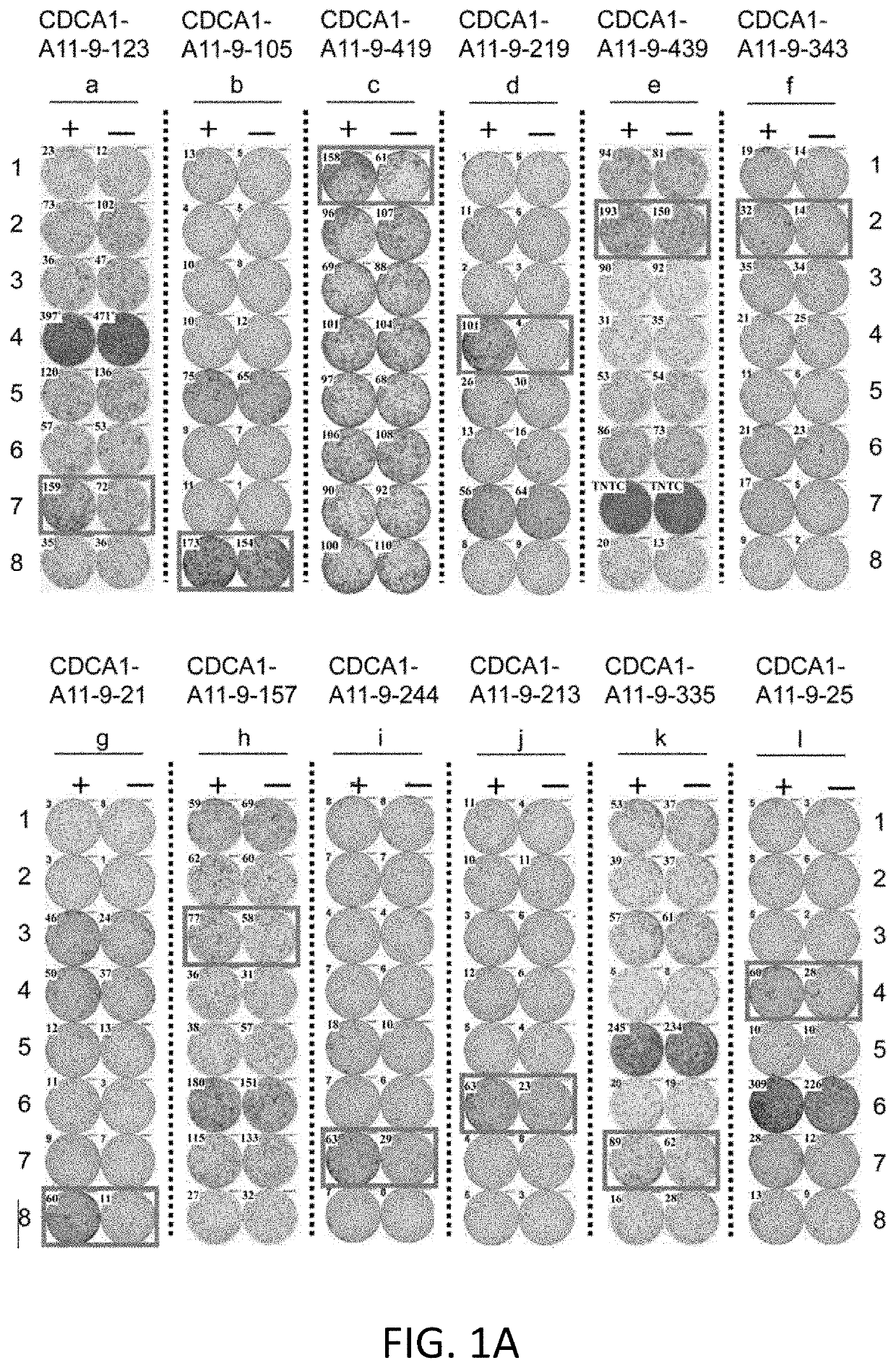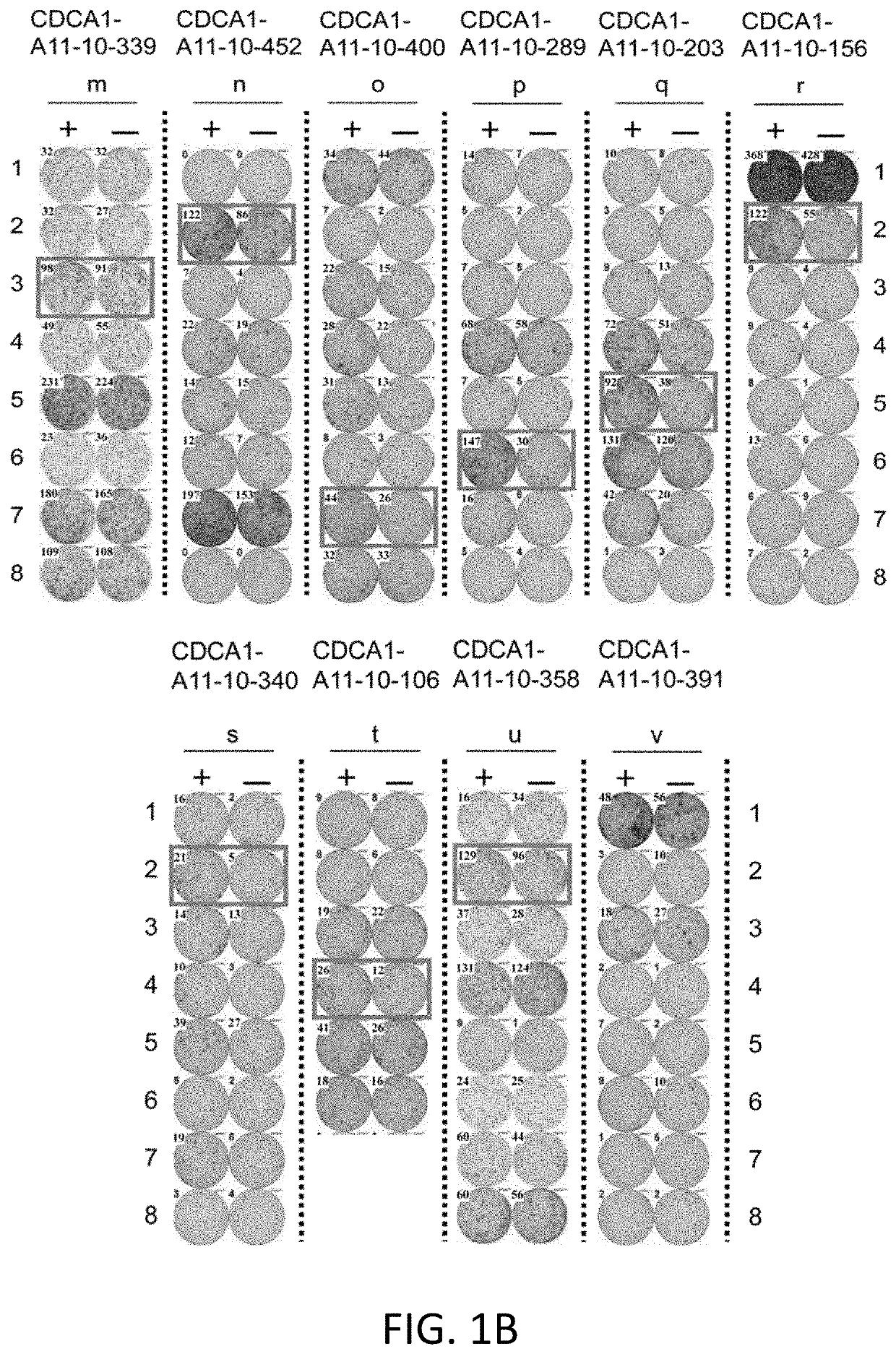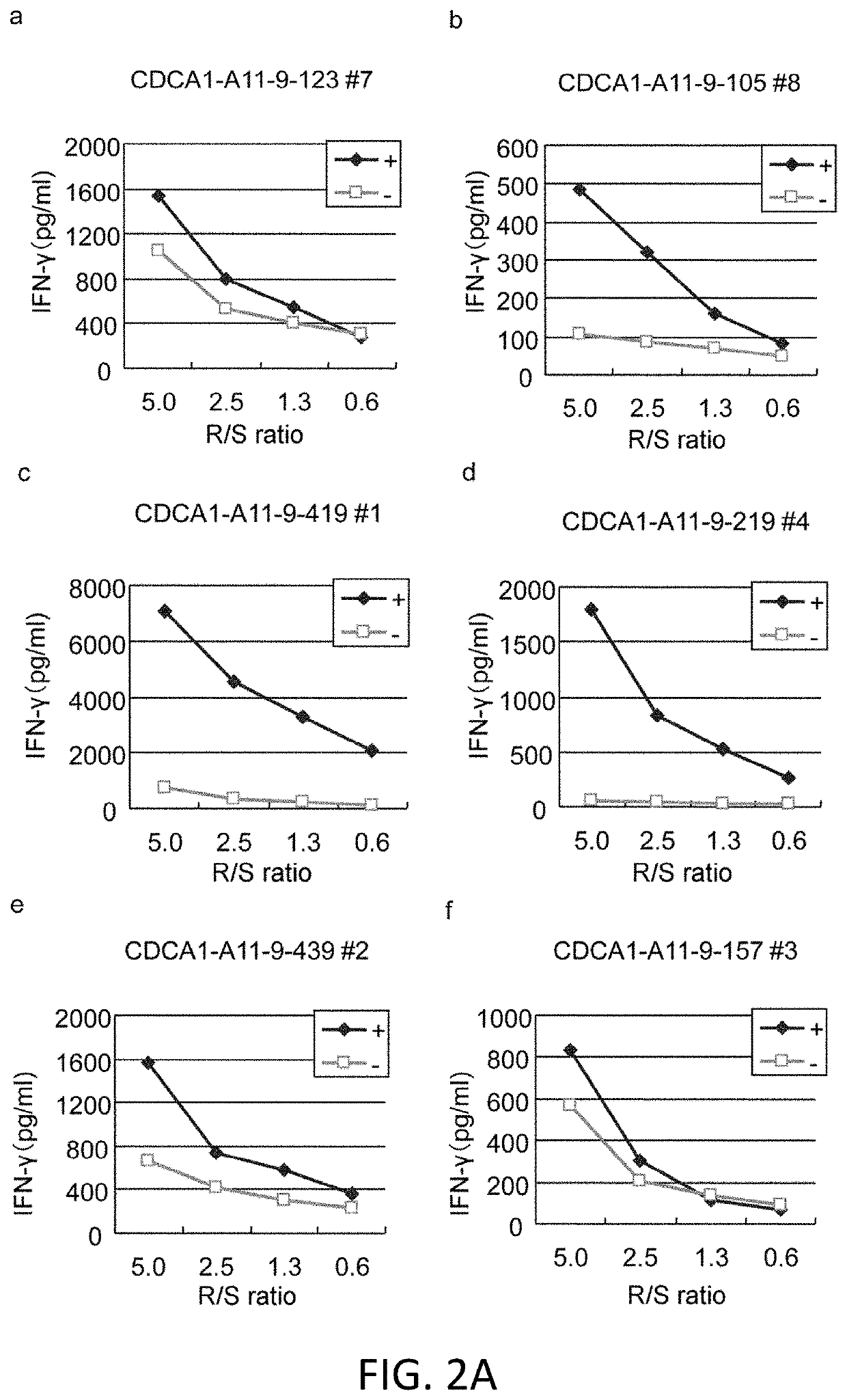CDCA1-derived peptide and vaccine containing same
a technology of peptides and vaccines, applied in the field of biological science, can solve the problems that conventional peptides are not suitable for immunotherapy in subjects, and achieve the effect of specific and potent immune respons
- Summary
- Abstract
- Description
- Claims
- Application Information
AI Technical Summary
Benefits of technology
Problems solved by technology
Method used
Image
Examples
example 1
Materials and Methods
Cell Lines
[0407]C1R, an HLA-A- and HLA-B-negative human B lymphoblastoid cell line, and COS7, an African green monkey kidney cell line, were purchased from ATCC.
Generation of Stimulator Cells with Stable HLA-A*1101 Expression
[0408]C1R (C1R-A11) that stably expresses HLA-A*1101 was used as a stimulator cell. A cDNA encoding the open-reading frame of HLA-A*1101 was amplified by PCR and cloned into an expression vector. C1R cells were transfected with the expression vector, and then selected using G418 (Invitrogen) for two weeks. The G418-selected cells were seeded into wells containing G418-added culture medium in a 96-well plate, and further cultured for 30 days. The exogenous HLA-A*1101 expression in C1R cells was verified by flow cytometric analysis.
Selection of Candidate CDCA1-Derived Peptides
[0409]CDCA1-derived 9mer and 10mer peptides that bind to the HLA-A*1101 molecule were predicted using the binding prediction server “NetMHC 3.2” (Buus et al., Tissue Anti...
example 2
Materials and Methods
Cell Lines
[0423]C1R, an HLA-A- and HLA-B-negative human B lymphoblastoid cell line, and COS7, an African green monkey kidney cell line, were purchased from ATCC.
Generation of Stimulator Cells with Stable HLA-A*3303 Expression
[0424]C1R (C1R-A33) that stably expresses HLA-A*3303 was used as a stimulator cell. A cDNA encoding the open-reading frame of HLA-A*3303 was amplified by PCR and cloned into an expression vector. C1R cells were transfected with the expression vector, and then selected using G418 (Invitrogen) for two weeks. The G418-selected cells were seeded into wells containing G418-added culture medium in a 96-well plate, and further cultured for 30 days. The exogenous HLA-A*3303 expression in C1R cells was verified by flow cytometric analysis.
Selection of Candidate CDCA1-Derived Peptides
[0425]CDCA1-derived 9mer and 10mer peptides that bind to the HLA-A*3303 molecule were predicted using the binding prediction server “NetMHC pan2.8” (Nielsen et al., PLoS ...
example 3
Materials and Methods
Cell Lines
[0439]C1R, an HLA-A- and HLA-B-negative human B lymphoblastoid cell line, and COS7, an African green monkey kidney cell line, were purchased from ATCC.
Generation of Stimulator Cells with Stable HLA-A*0301 Expression
[0440]C1R (C1R-A03) that stably expresses HLA-A*0301 was used as a stimulator cell. A cDNA encoding the open-reading frame of HLA-A*0301 was amplified by PCR and cloned into an expression vector. C1R cells were transfected with the expression vector, and then selected using G418 (Invitrogen) for two weeks. The G418-selected cells were seeded into wells containing G418-added culture medium in a 96-well plate, and further cultured for 30 days. The exogenous HLA-A*0301 expression in C1R cells was verified by flow cytometric analysis.
Selection of Candidate CDCA1-Derived Peptides
[0441]CDCA1-derived 9mer and 10mer peptides that bind to the HLA-A*0301 molecule were predicted using the binding prediction server “NetMHC 3.2” (Buus et al., Tissue Anti...
PUM
| Property | Measurement | Unit |
|---|---|---|
| emulsion | aaaaa | aaaaa |
| composition | aaaaa | aaaaa |
| sizes | aaaaa | aaaaa |
Abstract
Description
Claims
Application Information
 Login to View More
Login to View More - R&D
- Intellectual Property
- Life Sciences
- Materials
- Tech Scout
- Unparalleled Data Quality
- Higher Quality Content
- 60% Fewer Hallucinations
Browse by: Latest US Patents, China's latest patents, Technical Efficacy Thesaurus, Application Domain, Technology Topic, Popular Technical Reports.
© 2025 PatSnap. All rights reserved.Legal|Privacy policy|Modern Slavery Act Transparency Statement|Sitemap|About US| Contact US: help@patsnap.com



